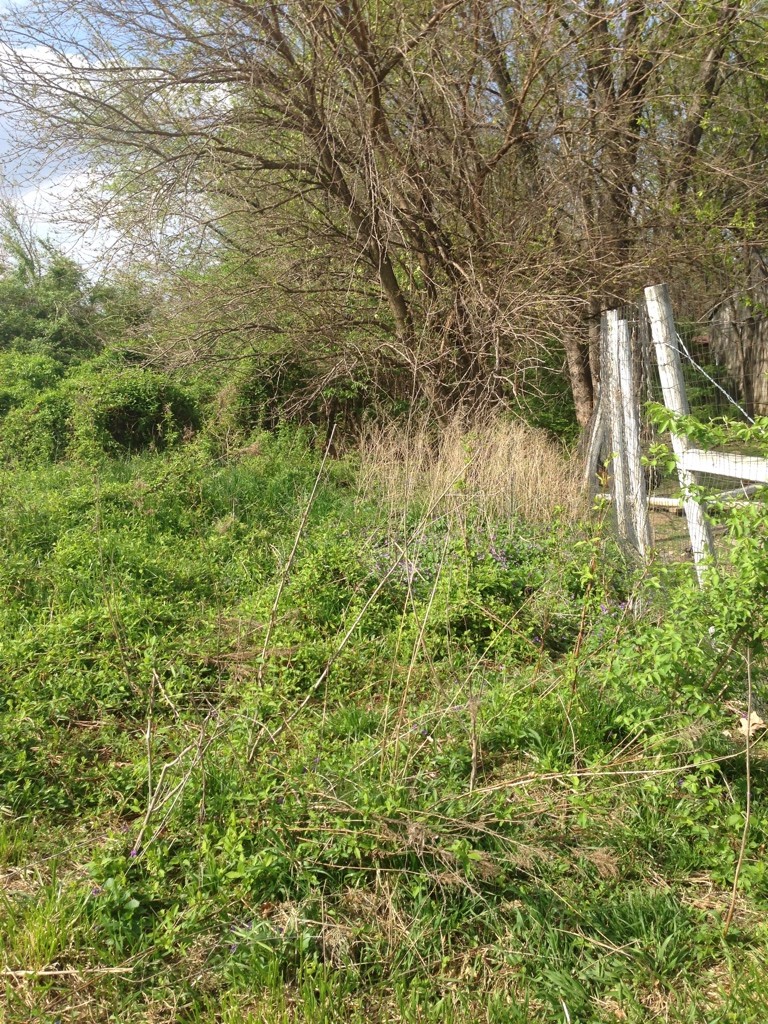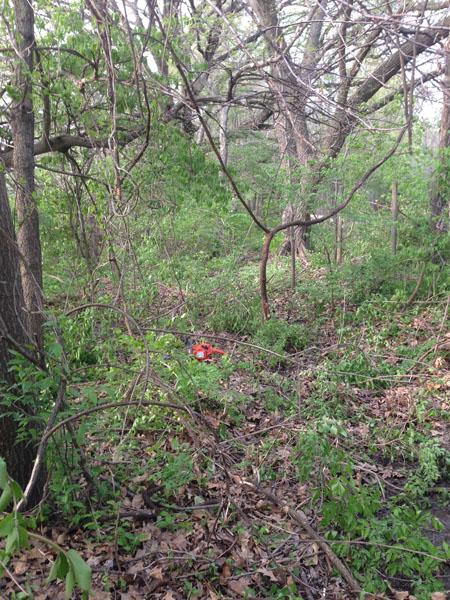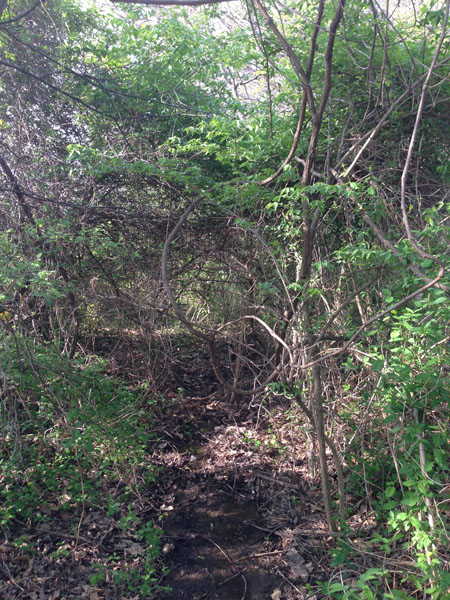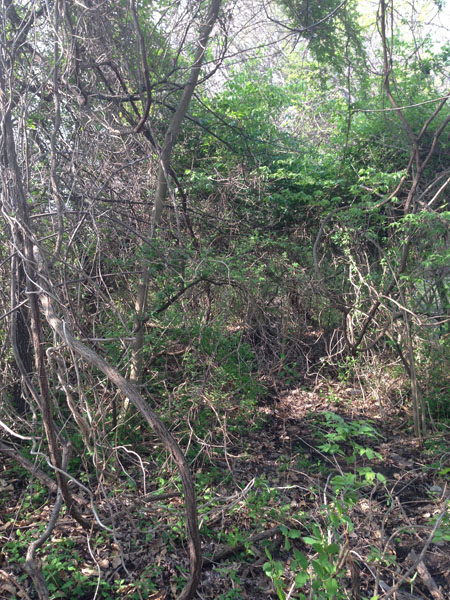posted on Friday, April 17th 2015 12:33 am |
 Beyond the Mulberry tree lies a secret trail… New in 2015, this trail runs the length of our property line in a woodland setting. As time and funds permit, we’ll be adding native and medicinal plants, creating a teaching trail for the community to enjoy and learn from. The purpose of this trail is to educate the community, enhance native and endangered plant species, create wild spaces for wildlife to habitat and to cultivate at risk and endangered medicinal herbs. Currently this medicine trail hosts (we’ll add to the list as we add to the trail and discover what’s growing as we clear out the invasives): Plants Shrubs Trees In the coming seasons, we hope to add: Plants Shrubs Trees Water/Marsh Plants Phase One – 2015 Clearing trash and debris – The previous tenants of our property viewed our land as a trash dump. There are lots of beer bottles and cans (they held wild parties that the town is still talking about 20 years later), old household goods and car parts as well as trash that has blown in from the subdivision. Planting of natives and medicinals – We have plants we will be transplanting from our gardens and friends’ gardens as well as many that we have on order to plant as time and funds permit. We hope to create a native oasis that will benefit the community and the local fauna.  I forgot to snap before photos but this is looking back out towards the trailhead. To the left is a stream where I can grow some water loving plants. All that greenery to the left? Honeysuckle. By the time we were done today, it was all gone. I’m envisioning Black Cohosh, Blue Cohosh, Ginger, Goldenseal, Ginseng, Bloodroot, Solomon’s Seal, Trillium, False Unicorn Root, True Unicorn Root, Mayapples, Gooseberries, Nettles and so much more along this trail…  Turning around and looking the other way, you can see the wall of Honeysuckle we’ll be facing in the next day of hacking. The greenery on the right is Honeysuckle that has been cut down and ready to be cleared out. We are mostly throwing it into the pasture at the moment for the goats and sheep to clean off then we’ll burn the stripped branches once they dry out. That white glob in the back is a pile of trash that I gathered to be picked up and thrown away. There is so much trash all along the trail, a lot of it blows in from the subdivision (on the left side of the entire length of our property). Sage was excited to start building himself a debris hut as we worked.  Hey! There’s one of our mama turkeys, setting on a clutch of eggs. She wasn’t very happy to see us cutting down the brush around her, but we piled it back up to give her some privacy, she’s one of the first critters in our habitat hedge row! Phase Two – 2015/2016 Continue planting, including native trees and shrubs – We will continue to build up the natural flora each year, working to see which habitats within this location best suit the plants we are planting. Phase Three – late 2015 and beyond Maintenance and continual planting – We’ll host work days for folks of the community to come out and assist with weeding out the invasives that are sure to return in the first few years of growing this garden and to help divide and spread the plants as they begin to grow. *On United Plant Saver’s “At Risk” List Sources for Native and Endangered Medicinal Herbs: |
Want to Leave a Reply?
|
|






